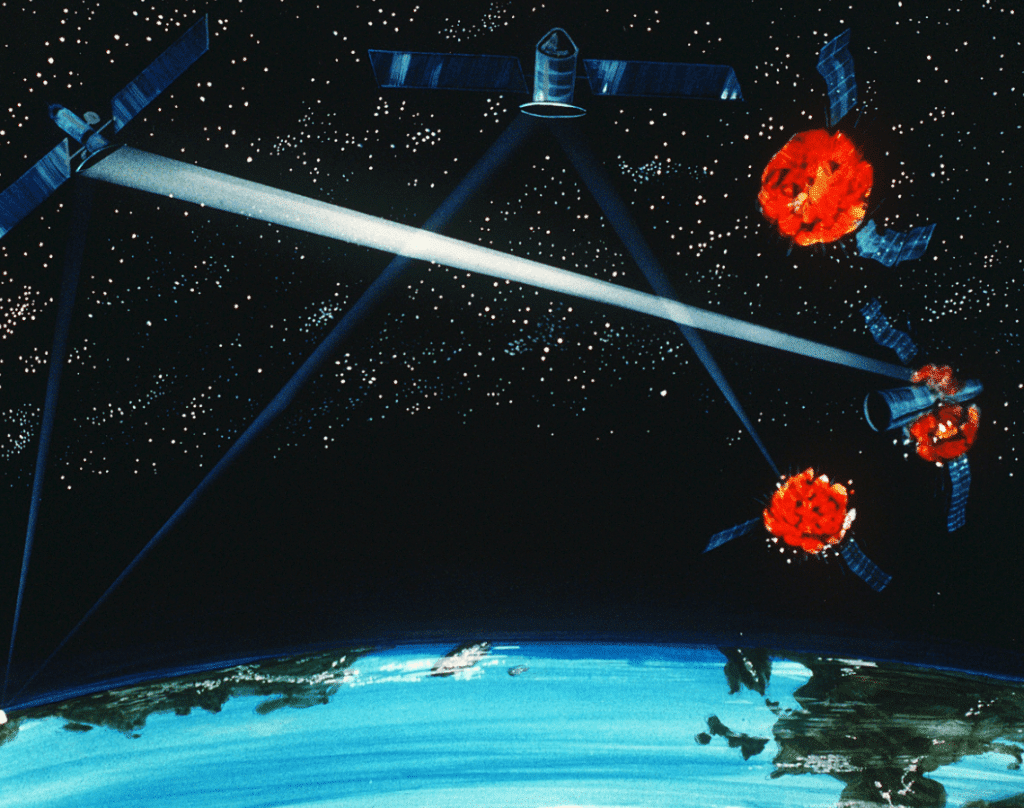The Pentagon’s getting closer to fielding talking lasers
By Matt Field | July 25, 2019
 A US military artist's vision of laser weapons. Meanwhile on Earth, the Pentagon is well on the way to making talking laser-formed plasma balls a reality. Credit: Defense Department via Wikimedia Commons.
A US military artist's vision of laser weapons. Meanwhile on Earth, the Pentagon is well on the way to making talking laser-formed plasma balls a reality. Credit: Defense Department via Wikimedia Commons.
Laser-beam-formed talking plasma balls. That’s one of the Pentagon’s newer concepts for a non-lethal weapon. The fiery white balls can pierce glass and issue commands like “Stop or we will be forced to fire upon you.” While seemingly straight out of the pages of a Sci-fi move, the Military Times reports that the Pentagon has finished one phase of testing on the technology.
The Laser Induced Plasma Effect program is part of the military’s Joint Non-Lethal Weapons Directorate, which is developing a host of, as the name suggests, non-lethal technologies. According to the Military Times a current focus is creating human voice in the right wavelengths to travel through lasers. The outlet obtained footage of a small plasma ball forming in the air and commanding listeners to stop. It appears to emanate from an apparatus just a few inches away.
The directorate believes the technology is still five years from being ready for use in the field. Eventually it should work on targets kilometers away. While perhaps the stuff of nightmares for some people—again, this technology involves floating, talking lit-up balls—the weapon is being designed for defensive purposes. It may be useful in keeping people away from military installations.
On the flip-side, the Pentagon has a long, fraught relationship with developing lasers that pack a more destructive punch, like those envisioned by Reagan administration officials in the 1980s. Then, the Pentagon worked to develop both space-based and plane-based lasers to shoot down missiles. Many of these efforts proved extremely unwieldy—one of the envisioned space lasers would have required a launcher bigger than the famed Saturn V rocket that carried the Apollo crews into space, which was one of the biggest rockets ever made. Some scientists joked that the most effective use of one heavy and complicated plane-based laser was to drop it on the enemy.
The Defense Department’s research head Michael Griffin, a veteran of the so-called Star Wars-era during the Reagan administration, has revived some old ideas for missile defense and requested millions for space-based lasers. While some Sci-fi-like laser ideas seem far fetched, apparently talking plasma balls are already a reality.
Publication Name: Military Times
To read what we're reading, click here
Together, we make the world safer.
The Bulletin elevates expert voices above the noise. But as an independent nonprofit organization, our operations depend on the support of readers like you. Help us continue to deliver quality journalism that holds leaders accountable. Your support of our work at any level is important. In return, we promise our coverage will be understandable, influential, vigilant, solution-oriented, and fair-minded. Together we can make a difference.
Keywords: Star Wars, lasers, plasma
Topics: Disruptive Technologies, What We’re Reading















At some point, we have to ask ourselves: who is the enemy? Is it our adversaries, or the inventors promoters and profit takers, under the guise of ‘defense’?
If you can imagine the most destructive and exotic weapons, you get to run our country and our military.
Wow, talking lasers. I would hate for them to use diplomacy and a mental health worker, or getting those broke and broken a job. Why do something for $20, when you can charge millions? Inventors of these strategies are welfare recipients.
The generation of ‘plasma balls’ and their projection was pioneered by Soviet scientists in the 1980’s.